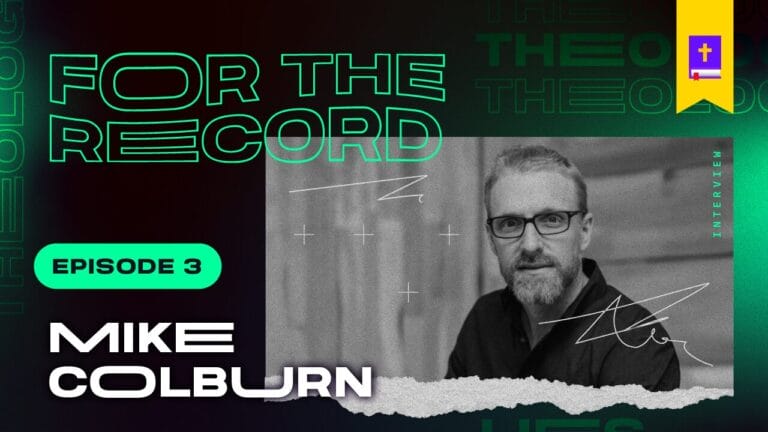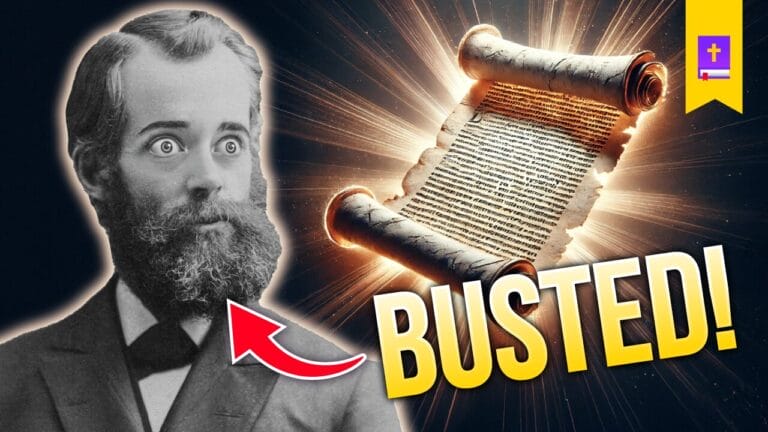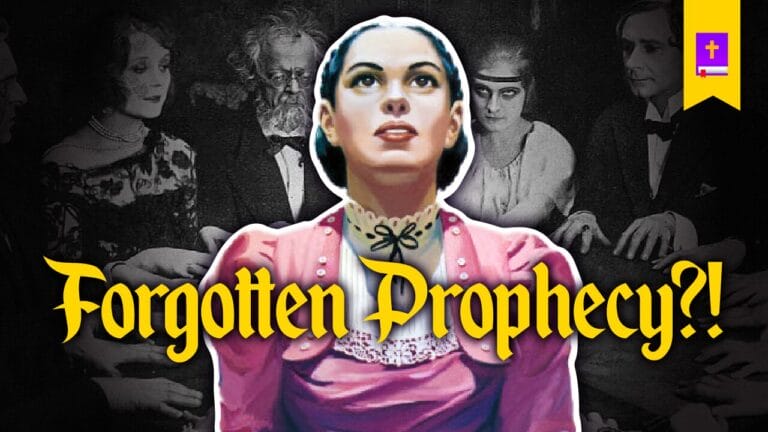Adventist teaching: Yes
Biblical teaching: No
On this subject, it’s important to understand that there are varying views within the “yes” category. The Jehovah’s Witnesses teaching is that Jesus is an angelic, created being and that’s who Michael is. This is a damnable heresy. Jesus is not a created, angelic being. But the Adventist position is very close to this in that, they will claim Jesus wasn’t created, but that he has an angelic nature, became Michael the Archangel to redeem fallen angels, but they rejected him, and so he incarnated as a man to redeem humanity.
Some of the Protestant Reformers held to a view of Michael being a second name for Jesus in the Bible, a pre-incarnate manifestation of Christ (what’s called a theophany). When commenting on Daniel 12:1, many of them believed Michael to be a type/shadow that pointed to Jesus and a future event of Christ standing up off His throne and returning for His people (Hebrews 9:27-8). This was because they understood that Daniel is prophetic literature. But they did not believe Michael and Jesus were ontologically the same being. They were all orthodox Trinitarians.
The Seventh-Day Adventist position is informed by their Great Controversy worldview.
Ellen G. White (who they believe was divinely inspired and corrects inaccurate interpretations of scripture), said that Michael is not the Lord but the Lord is the Father, thus distinguishing Michael from being the Almighty. This is consistent with the SDA view of the Godhead where the Father alone is the Almighty. The Reformers absolutely did not affirm this, but that Jesus is completely co-equal with the Father and the Holy Spirit as the One Lord, the Almighty God. They also did not claim that Jesus has an angelic nature (see below).
This evidences that when Adventists appeal to the Reformers to try and support their unique view—just like the Jehovah’s Witnesses do for theirs—this is entirely superficial.
The Adventist Jesus Has An Angel Nature
In the one of the SDA Church’s official organs, The Signs of the Times, we read that:
The eternal Word gave Himself. He did not aspire to be equal with God, “did not meditate a usurpation” of the throne of the universe (see Phil. 2:5-7 ARV), but He emptied Himself, gave Himself, then and there, for sinners. He took the form of a servant, becoming an angel among the angels that He might redeem angels; but they would not. And when they rejected the righteousness and life so freely offered, He descended lower still to those duped by Satan—fallen man—stooping even to death, that He might redeem of the fallen all who desired to be redeemed, and vindicate to the universe to all eternity the character of God. That was the work of the Word of God, the eternal Logos, when He became Michael the Archangel, when He became Jesus the Man of Nazareth, when He was anointed the Christ, when He died our Sacrifice on Calvary. Yet during all this time the hosts of evil, with all the baleful, deceptive, cruel devices of sin, were hurled against Him, that God’s character might be marred, that the great Vindicator—Redeemer might fall.
Signs of the Times, June 6, 1911
Here we see their affirmation of the Kenosis heresy derived from a misinterpretation of Philippians 2:5-7—that Jesus was only a man while on earth. But we also see they claim that, at a certain point, Jesus became Michael the Archangel in seeking to redeem the angels that rebelled, but they rejected him. So he then went on to incarnate as a man to seek and redeem mankind.
And this is consistent with the Great Controversy narrative which states that Jesus was exalted to be made equal with God the Father, prior to the creation of the earth, and was given authority over all of the angels. It was this exaltation that supposedly led to Lucifer becoming jealous, rebelling, becoming Satan the Adversary and starting the Great Controversy.
A year later, in the same publication, George W. Reaser, in an article titled Our Saviour and Lord as Christ as Michael the Archangel writes:
He [Jesus] took the nature of angels to repeat, the first step, then, in His humiliation, in laying aside His divine nature, was to put on the nature of angels, and thus it is that we have Jesus brought to view as “Michael the Archangel,” “the Commander of the hosts of heaven,” “the Captain of the host of the Lord,” and as such, “the armies in heaven follow Him.” When He became an angel, He bore a fitting name, even as when, later, He became man, His name befitted the nature which He took by virtue of His birth into’ our human family. That name was ” Emmanuel,” “God with us.” His name as an angel is “Michael,” which signifies “the one who is like God.” Whatever the name that He, takes in crushing sin and rebellion, in redeeming the lost and in restoring harmony to the universe, that name must indicate that God is in Him and with Him, on the very plane and in the very nature of the class of beings to whom He is sent. By living the God-life on the plane of angels, of which Satan was one, altho fallen, He could neutralize the force of Satan’s accusations. Thus when He became an angel, the fact must not be lost sight of that He was God with the angels, yet living on their plane, possessing their natures ; and this thought is preserved in the name that He bears as an angel.
Signs of the Times, July 23, 1912
It’s often asserted by Adventists that the term “angel” is only ever applied to Jesus to denote the role of a messenger, but not to describe him as having an angelic nature. As we see, this clearly isn’t the case.
In the great controversy storyline—which is what both of these articles are seeking to explain, The claim is that the Adventist Jesus took on an angelic nature to seek to save angels in the same way he took on a human nature when incarnating as a man to seek to save humans. When all of the apostate angels rejected him, he then sunk even lower down to the plane of angels by taking on a human nature.
Ellen White’s Twisting of Jude 9
Referencing Jude 9, Ellen White claims to have seen the events documented in that verse in vision:
I saw that Moses passed through death, but Michael came down and gave him life before he saw corruption. Satan claimed the body as his, but Michael resurrected Moses, and took him to heaven. The Devil tried to hold his body, and railed out bitterly against God, denounced him as unjust, in taking from him his prey. But Michael did not rebuke the Devil, although it was through his temptation and power that God’s servant had fallen. Christ meekly referred him to his Father, saying, The Lord rebuke thee.
Ellen G. White, Spiritual Gifts, Vol. I, pg. 43 (SG 43.1)
But when examining Jude’s own theology, it can be conclusively determined that Jude did not believe Jesus and Michael were the same individual. In Jude 4, he points out that people had crept in unawares and were leading people after a false Jesus and exhorts them to contend for our “Master and Lord, Jesus Christ.” In Jude 5, he then proceeds to give an example of who the true Christ is by stating that the true Jesus led Israel out of Egypt. When we reference this in the Old Testament, it states that it was Yahweh that did this—the Almighty (Deuteronomy 5:15). Which means that Jude believed Jesus to be Yahweh, the one Lord (Deuteronomy 6:4, Ephesians 4:5).
When we get to Jude 9, we see Jude distinguish Michael from the Lord. As Ellen White rightly points out, Michael left the rebuking of Satan to the Lord—distinguishing Michael from the Lord after telling us that Jesus is that one Lord. Jude’s point is not to distinguish the Father from the Son by using the word “Lord” after he has just told us Jesus is the one Lord, but rather to distinguish Michael from God.
Some Adventists will claim that Michael does do the rebuking but refers to himself in the third person as the Lord. This is a tacit admission that Ellen White was wrong, didn’t see this in vision, and then fails the test of a prophet. Which leaves those that say this in a catch 22.
“There’s Only One Archangel!”
Another common claim you will hear them make is that the bible only ever refers to “the archangel” with the definite article which implies that there is only one, ergo, it’s a titled reserved for Jesus.
The term [archangel] is found only twice in Scripture. In 1 Thessalonians 4:16 it is the voice of the archangel that awakens the dead. In Jude 9 the archangel challenges Satan about the body of Moses. Both times the word is defined as “The Archangel,” never “an archangel,” or “one of the archangels.” This clearly implies that there is only one Archangel.
Former SDA Evangelist Henry Feyerabend, Who Is Michael?
Besides Daniel 10:13 saying that Michael is “one of the chief princes,” which means there are more like him, we run into another problem with this claim which is Ellen White who holds more authority than Mr. Feyerabend:
“Rebellion is as the sin of witchcraft, and stubbornness is as iniquity and idolatry.” Rebellion originated with Satan. Notwithstanding the exalted position which he occupied among the heavenly host, he became dissatisfied because he was not accorded supreme honor. Hence he questioned God’s purposes and impugned his justice. He bent all his powers to allure the angels from their allegiance. The fact that he was an archangel, glorious and powerful, enabled him to exert a mighty influence.
Ellen G. White, Signs of the Times, September 14, 1882
She claimed that Satan was also an archangel.
Conflating Michael with the Angel of the Lord
One of the central errors the SDA Church makes is conflating Michael the Archangel with The Angel of the LORD who is mentioned throughout the Old Testament. An example of this can be seen in the now defunct book Questions on Doctrine where the SDA Church writes:
The use of the expression “The Lord rebuke thee” is significant. It is found in but one other place in the Holy Scriptures—Zechariah 3:2. There the speaker is “the angel of the Lord” (verse 1); but in verse 2, it is expressly the “Lord” who speaks. Here we find the “angel of the Lord” equated with Jehovah Himself, and it is He who says to Satan, “The Lord rebuke thee.”
This is a unique expression. The first Biblical use of it is by the Lord in dealing with Satan. The same expression is used in Jude. Might it not be, then, that the same Divine Being is revealed here? In Zechariah He was manifested under one of His titles, “the angel of the Lord,” in Jude under another of His titles, “Michael.”
Questions on Doctrine, pg. 82
This is what’s called conflation. In Jude, Michael doesn’t do the rebuking, as even the SDA prophetess claimed. But in Zechariah 3:2, the Angel of the Lord does do the rebuking. If Michael is the Angel of the Lord, why didn’t he do the rebuking since He had no issue doing so in Zechariah?
The Angel of the LORD (or the Angel of His Presence) is the pre-incarnate Word, the second Person of the Godhead before incarnating. We know the Angel of the LORD is not a mere creature because He is worshiped (Genesis 16:13; Judges 6:22–24) and scripture is clear this is something only the Almighty God is due (Exodus 34:14; Acts 14:8-18). Jacob also prays to Him, referring to Him as the God who had been his shepherd and delivered him from all harm (Genesis 48:15-6).
Jesus is the LORD of all (Isaiah 44:24, Acts 10:36; Colossians 1:16) and since Jude tells us that Michael dared not rebuke Satan but left it to the LORD (Jude 9), that would mean Michael isn’t Jesus but rather a created angelic being with a high level of authority. Jesus rebuked Satan (Zechariah 3:2, Matthew 4:7-10; Mark 8:33) showing He does have the authority to do such a thing. Jesus has no equals (Isaiah 46:5). Jesus Christ is God Almighty.










